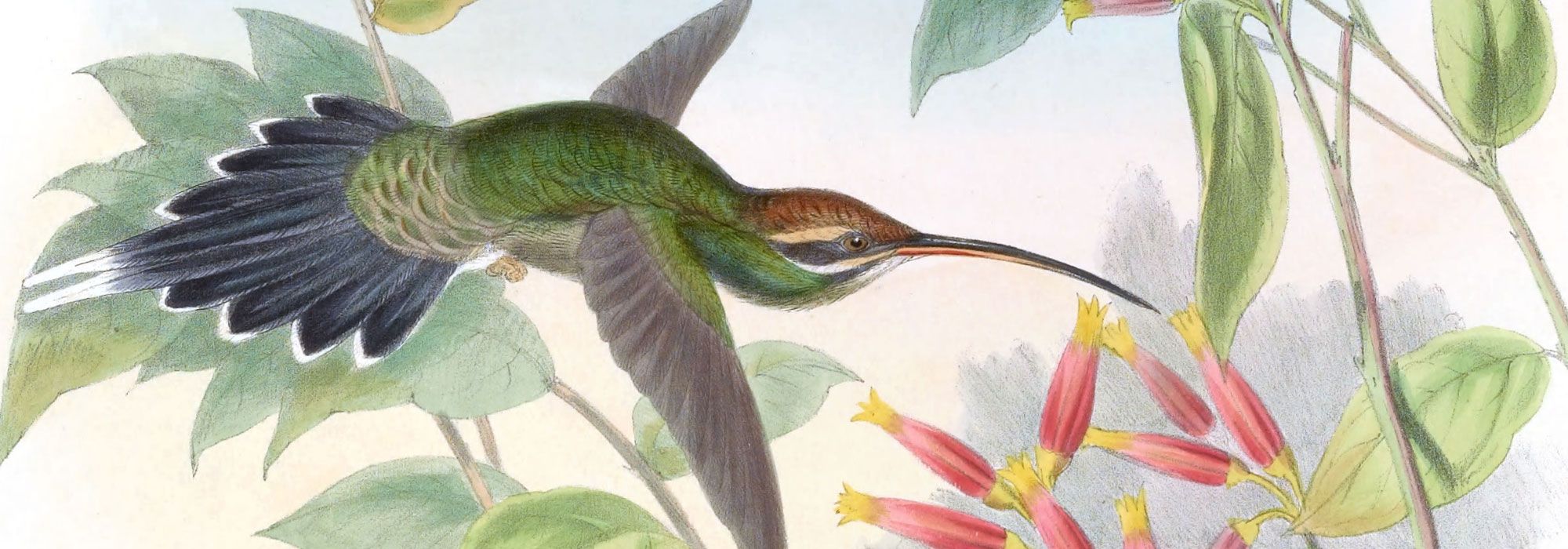
I commence my first volume with that well-marked section of the family comprising the genera Grypus, Eutoxeres, Phaëthornis, and their allies.
The members of all these genera are remarkable for being destitute of metallic brilliancy, and, as their trivial name of “hermits” implies, for affecting dark and gloomy situations. They constitute, perhaps, the only group of the great family of Humming-Birds which frequent the interior of the forests, and there obtain their insect food, some from the undersides of the leaves of the great trees, while others assiduously explore their stems in search of such lurking insects as may be concealed in the crevices of the bark. It has been said that spiders constitute the food of many species of this group; and I believe that such is the case, for we find the bills admirably adapted for their capture, particularly those of Grypus and Eutoxeres. To individualize by name any particular country in South America in which these birds are found is unnecessary, for they are generally distributed over its temperate and hotter portions; but they are not to be met with either very far north or very far south of the equator; that is to say, their range is bounded northwardly by Southern Mexico, and southwardly by Bolivia. Within these limits, the high and the low lands are alike tenanted by them; but it is in the equatorial region that they are the most numerous, and where all, or nearly all, the genera have representatives. In the colouring of their plumage the sexes are generally alike. As a whole, they form a well-marked division, distinguished by their own especial peculiarities of form and style of plumage.
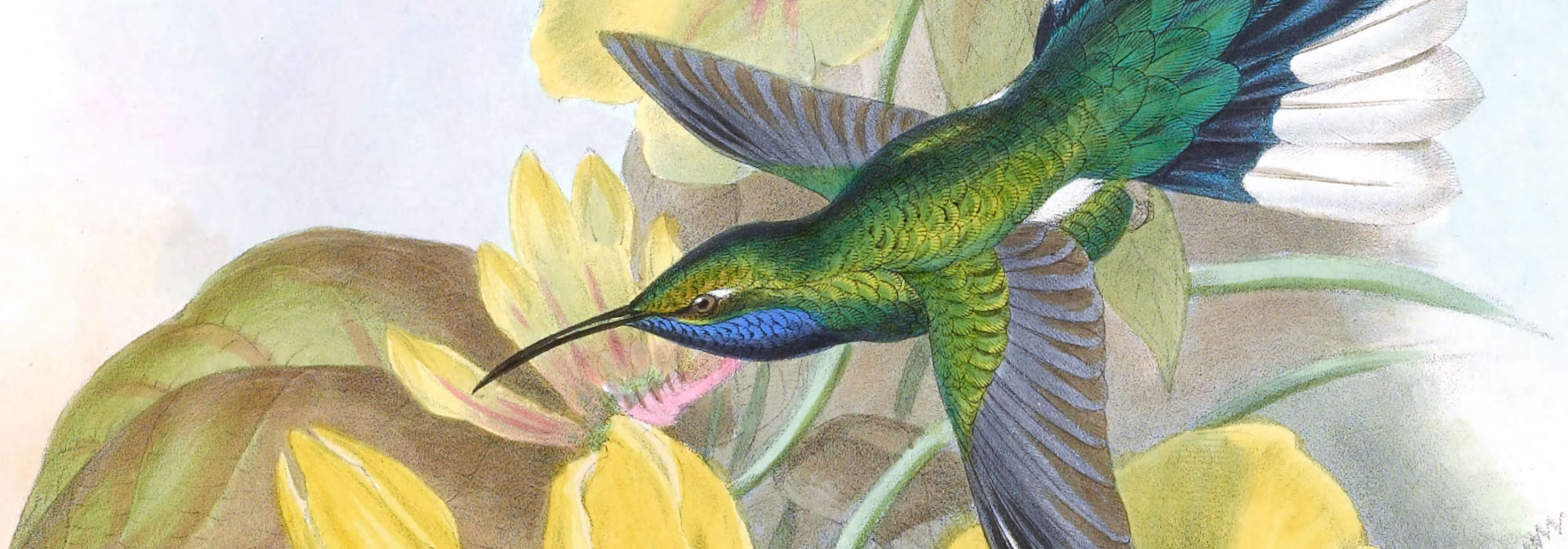
I commence the second volume with the Campylopteri, a group of Humming-Birds distinguished by their great size, by the diversity of their colouring, and by the broad, dilated shafts of the first three primaries or quill-feathers of the males.
The members of this group are spread over nearly the whole of the temperate regions of America, from Mexico to the equator, including Brazil, Guiana, Venezuela, and some of the West Indian Islands.
This section of the Trochilidæ comprises several very distinct forms:—one remarkable for a deeply forked tail, for the rich blue colouring of the body, and for the similarity in the outward appearance of the sexes; another for having the tail cuneate ; while a third, comprising six or seven species, is distinguished by a very ample and rounded tail. It is for the last form alone that I have retained the generic appellation of Campylopterus, applying that of Eupetomena to the deeply forked-tailed bird macroura, Sphenoproctus to the cuneate-tailed Pampa, and Phæochroa to the Cuvieri and the allied Roberti, which may be considered as aberrant, the broad shafts of the primaries (the principal characteristic of the group) being but slightly developed. These birds lead on to Aphantochroa.
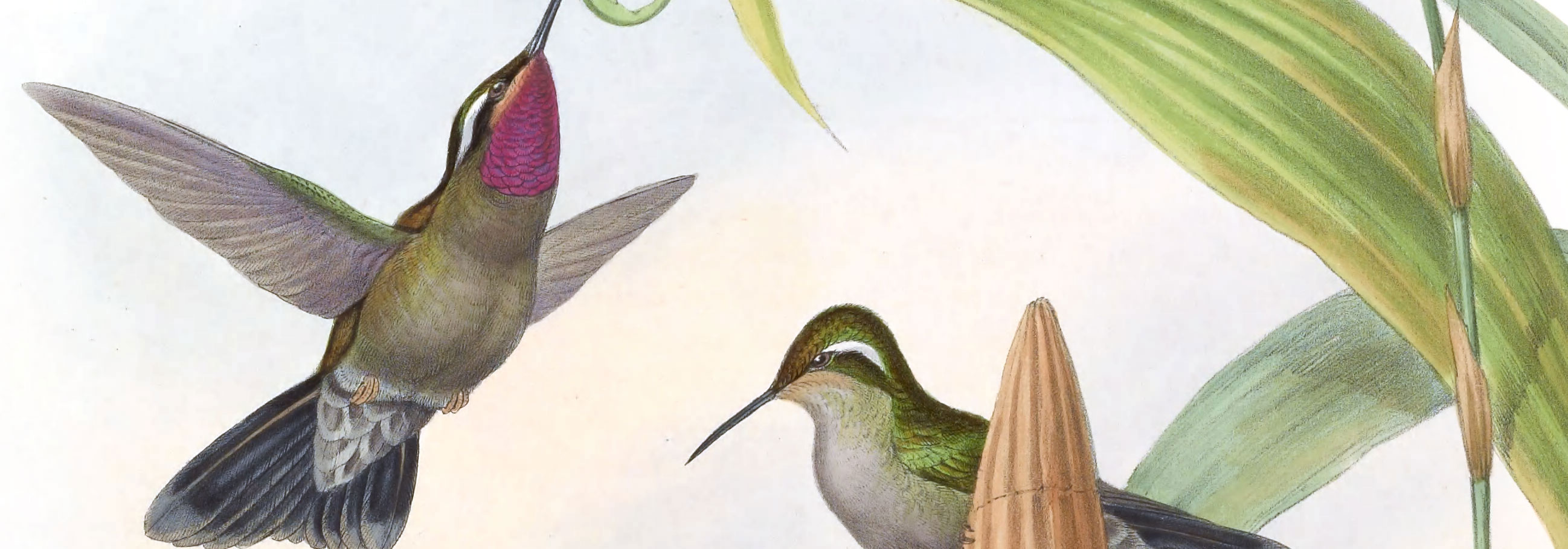
We now proceed to the genera Delattria, Cœligena, Lamprolema, Eugenes, and their allies, all of which are peculiar to Central America; at least, so far as is yet known, none of them have been found to the southward of the Isthmus; even Veragua, so far as we are aware, is not tenanted by any one of them.
It may be considered by some ornithologists that here the subdivision of genera has been carried too far; but having once broken ground, and separated the old genus Trochilus, it would be inconsistent to place together in one genus all the members of this Central American group of Humming-Birds; for while a certain degree of unity pervades them, no generic character could be found which could be applicable to the whole. This instance will serve most efficiently to illustrate the great diversity of closely allied forms which occur in the great family of HummingBirds. We frequently find groups, like the present, so diversified that nearly every species demands a generic title, while in such genera as Thalurania, Petasophora, and Aglæactis, the species, though as distinct as they well can be, possess characters common to all.
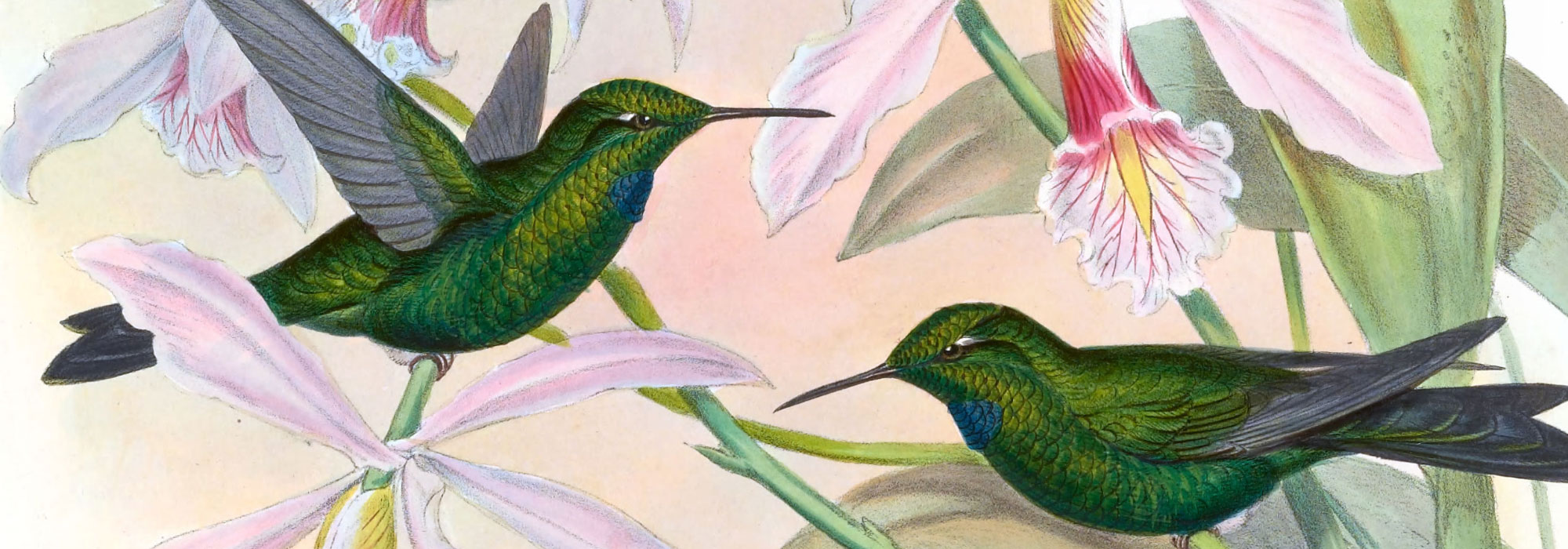
The species composing the Andean genera to which the names of Heliodoxa and Leadbeatera have been given, are all truly beautiful birds.
They are of large size, and have certain parts of their plumage more than usually resplendent,—so much so, indeed, that no bird has yet been found which equals them in this respect. From Venezuela and New Granada on the north to Bolivia in the south, the various members of these genera find a congenial habitat.
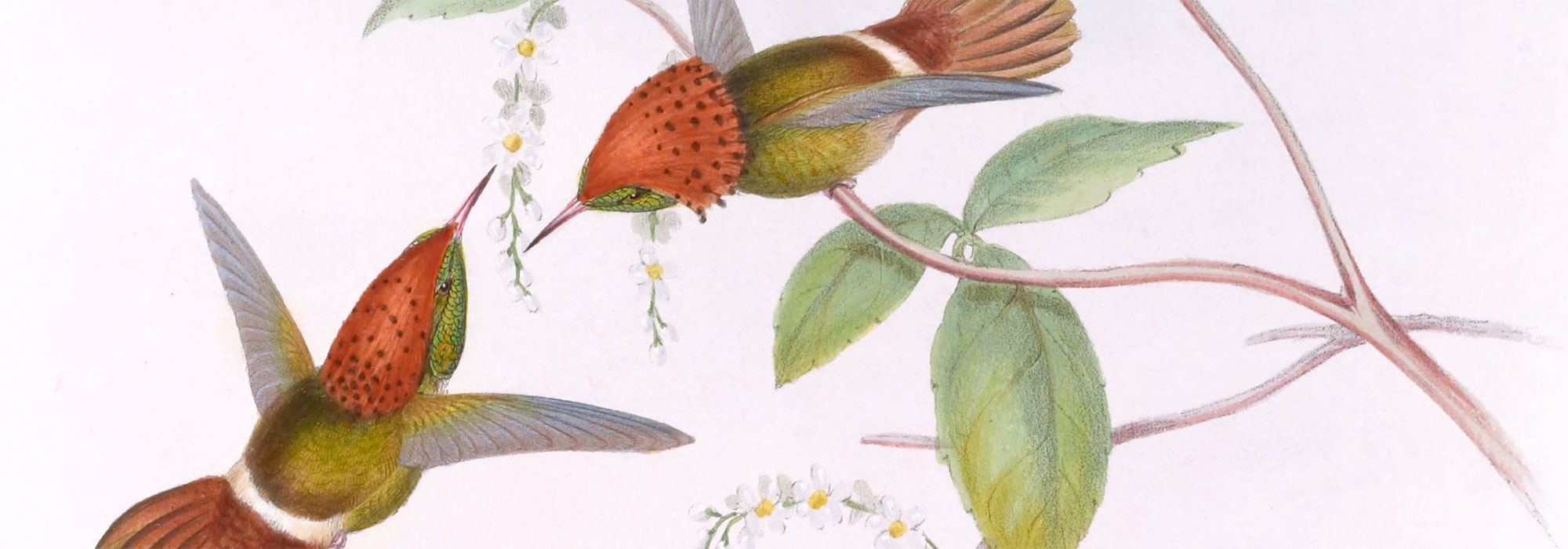
A considerable hiatus here occurs, which cannot at present be filled up, and we come to the elegant frill-necked Coquettes, the Lophornithes; and with these I commence the third volume.
They are among the most beautiful of the smaller members of the Trochilidæ, and are distinguished by the possession of lengthened ornamental plumes springing from the sides of the neck, which generally have a spangle of metallic lustre at the tip; they are further ornamented with beautiful lengthened crests, which are developed to a greater extent in some species than in others; in those in which the neck-plumes are the longest, the crests are least so, and vice versâ. They are spread over a great part of America, from Mexico along the Andes to Bolivia; they also occur in Brazil, the Guianas, and the Island of Trinidad.
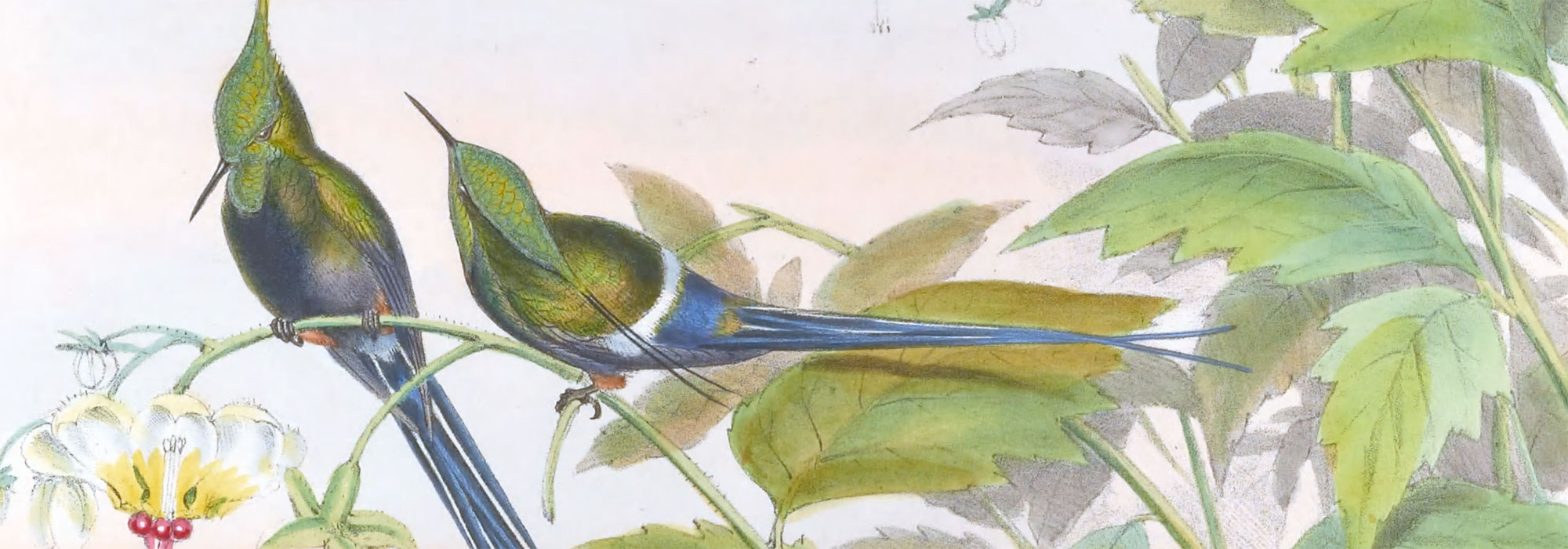
Gouldia, Popelairia, Gouldomyia and Prymnacantha are all generic terms proposed for the four species I have called by the trivial name of Thorn-tail. Of these, Bonaparte’s name of Gouldia, having the priority, has been adopted by me in the body of this work; but as the first species, G. Popelairi, differs from the others in possessing a most singular and elegant crest terminating in two hair-like feathers, I propose to adopt M. Cabanis’s classical name of Prymnacantha for this species, and to retain Grouldia for the others.
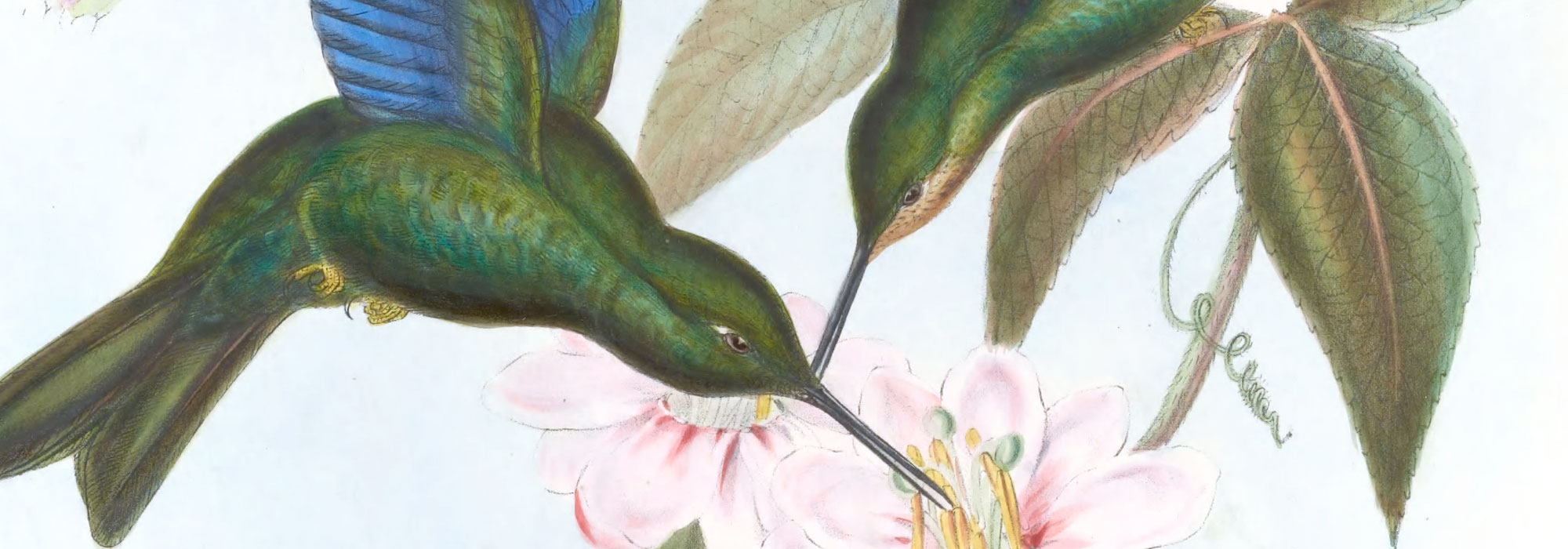
I have now gone through the species of Humming-Birds distinguished for their diminutive size, the delicacy of their structure, and for their luminous gorgets.
It is true that many other groups have their throats similarly adorned, such as the members of the genera Oreotrochilus, Heliangelus, &c.; but these birds are all of large size and of very different form, and as we proceed I think it will be seen that they are better placed hereafter. I proceed next, then, with the racket-tailed species—the Spathuræ, &c. I admit that there is no direct alliance between these and the former; but it will be recollected that I have stated that the Humming-Birds cannot be arranged in anything like a series of affinities. Here, then, we commence with a very different group; remarkable for the peculiar character of the tail in most of its members. Among these I place in the foremost rank the extraordinary bird bearing the specific name mirabilis. As any description, however accurate, must fail to give a correct idea of this singular species, | must refer my readers to the Plate, upon which it is correctly depicted.
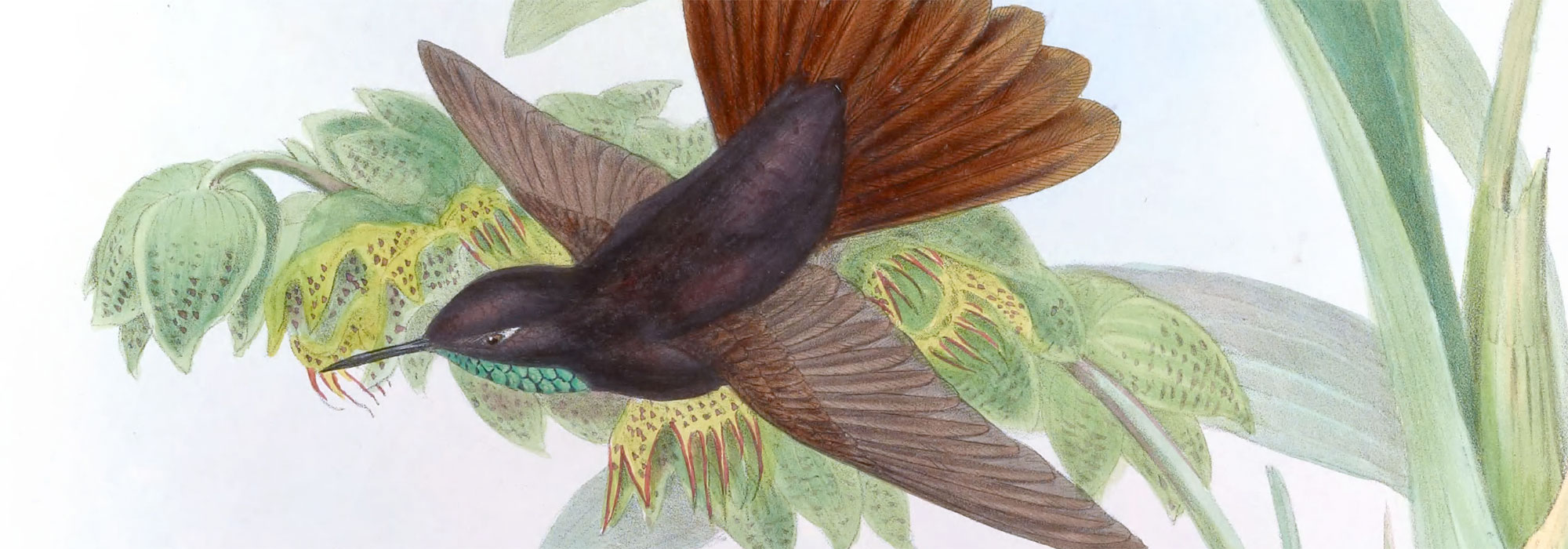
It will have been observed that each of the foregoing groups is characterized by certain peculiarities, and that one feature is more prominent than the others in each of the different forms: in some the back, and back only, is lit up with luminous colours; in others the throat is the only part thus adorned; in another (the Pterophanes) the wings alone are lustrous.
The group which stands next on my list of genera and species have their share of ornament disposed on their broad and ample tails: in nearly every species this organ is illumined with brilliantly shining colours—some blue, others purple, and others, again, bronze; in some these glittering hues appear on both the upper and under surface, while in others it is either confined to or is most brilliant on the latter. These colours, I am sure, the bird has the power of displaying to the greatest advantage, in order to render himself as attractive as may be when desirous of pleasing the female, perhaps, like the Peacock, for the purpose of his own vainglory. These varied beauties serve to increase our admiration of Nature’s works; at least such is the feeling they create in my own breast.
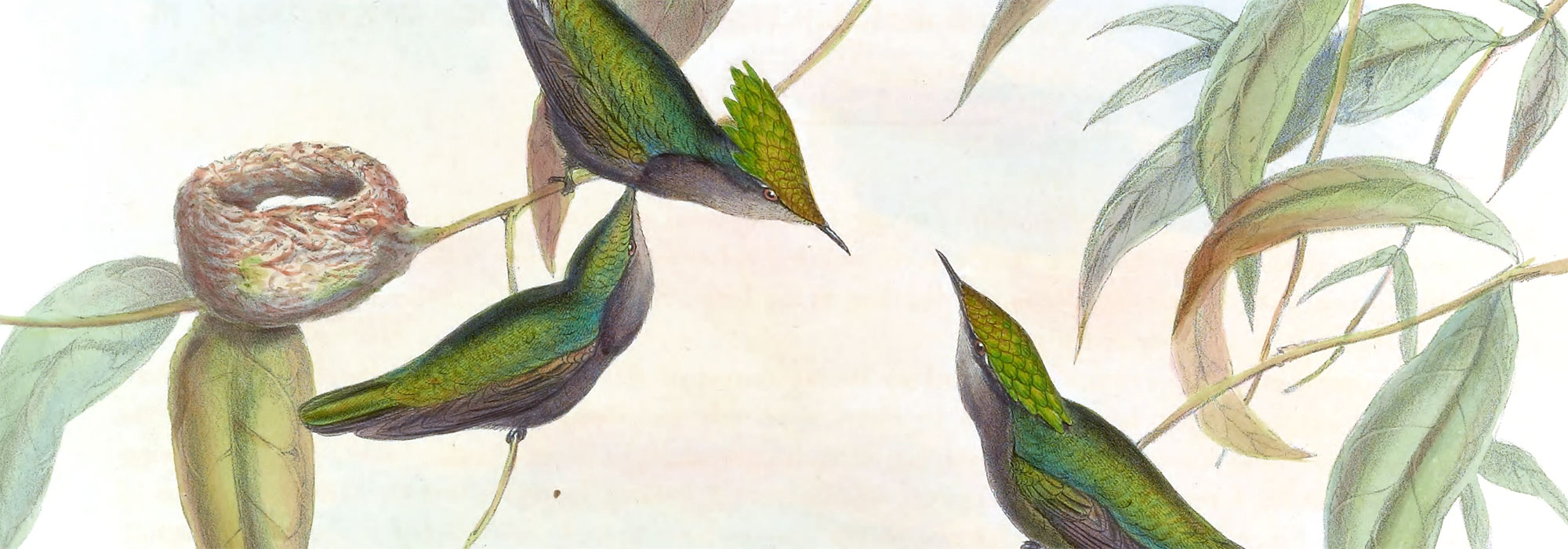
The fourth volume commences with a species which plays no inconsiderable part as an article of trade; for it is the one, par excellence, of which thousands are annually sent to Europe for the purpose of contributing to the decorations of the drawing-rooms of the wealthy, for the manufacture of artificial flowers, &c.; and well suited is it for such purposes, its rich ruby and topaz-like colouring rendering it one of the most conspicuous and beautiful objects imaginable.
The Chrysolampis moschitus (better known by its trivial name of Ruby and Topaz Humming-Bird) enjoys a very wide range, being found all over the eastern parts of Brazil, Cayenne, Guiana, Venezuela, the high lands of Bogota, and Trinidad.
The females of this form differ very widely from the males in the colouring of their plumage; and the young males undergo so many changes between youth and maturity, that they must have puzzled the most astute of ornithological investigators.
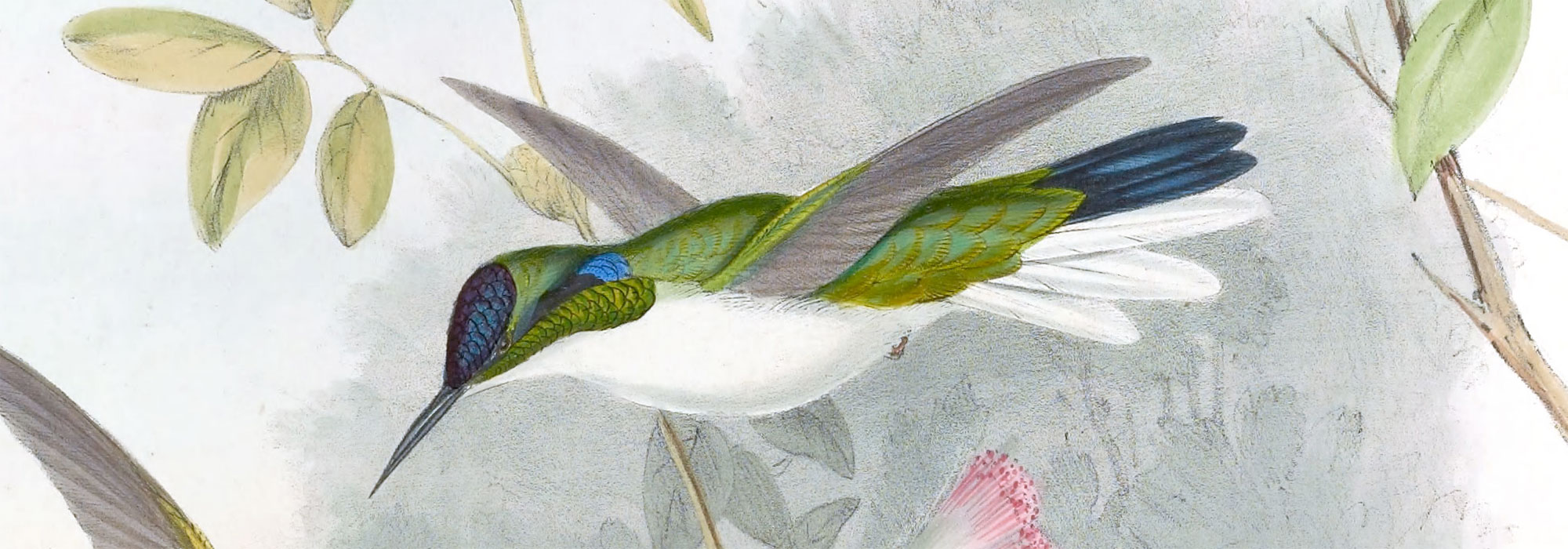
I must now direct the notice of my readers to some of the most chaste and elegant species yet discovered of this or any other family of birds—namely, the members of the genera Heliactin, Heliothrix, Schistes, and Petasophora.
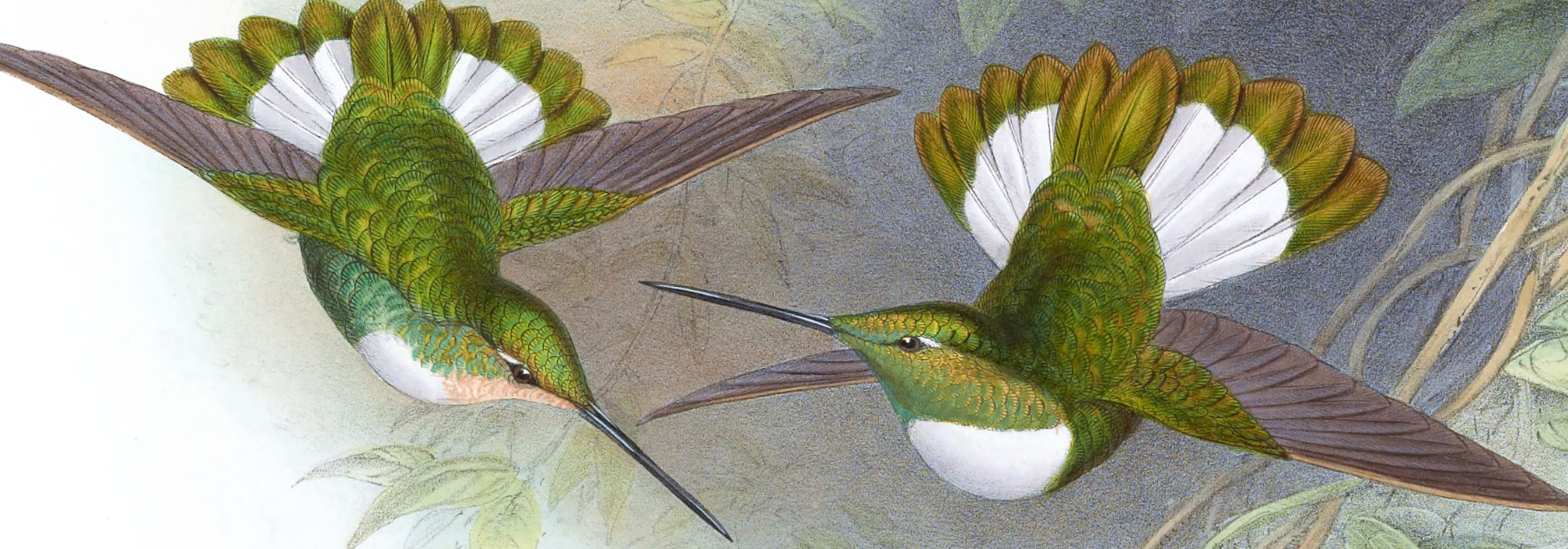
The forms to which we now proceed are mostly of large size, have straight lengthened bills, and are very gorgeously coloured.
These straight and prolonged bills are in unison with the flora with which they are associated, particularly such deep tubular flowers as those of the genera Brugmansia, Lepageria, Nematanthus, Tacsonia, Alstremeria, Dipladenia, &c.
The first genus is that of Docimastes. Of this remarkable form, the single species known stands alone among Humming-Birds for the great length of its bill. Nature here appears to have carried the development of this organ to its maximum; and how wonderfully is it adapted for exploring the lengthened tubular flowers from which the bird obtains its insect food!
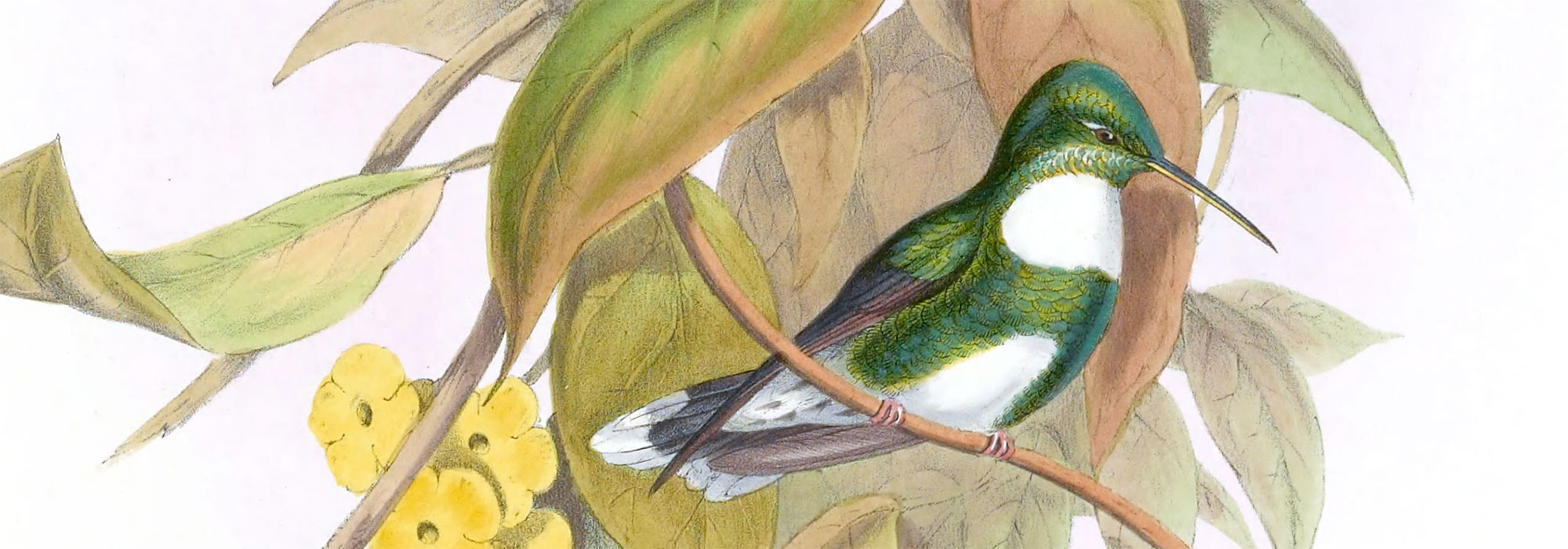
Proceeding from Mexico, southwards, through the high lands of the temperate regions of Guatemala, Costa Rica, and Veragua, we there find several species of the well-defined genus Cyanomyia which do not pass the Isthmus of Panama, while others occur in New Granada, Ecuador, and Peru.
I have not yet seen any species of this form from Brazil or from any of the eastern portions of the South American continent. They are all very lovely birds, the colours with which they are adorned being blue, glittering green, and white, to which the red bills of one or two of them offer a pleasing contrast. The females, although generally resembling the males, are inferior to them in size and colouring. With these birds I commence the fifth volume.
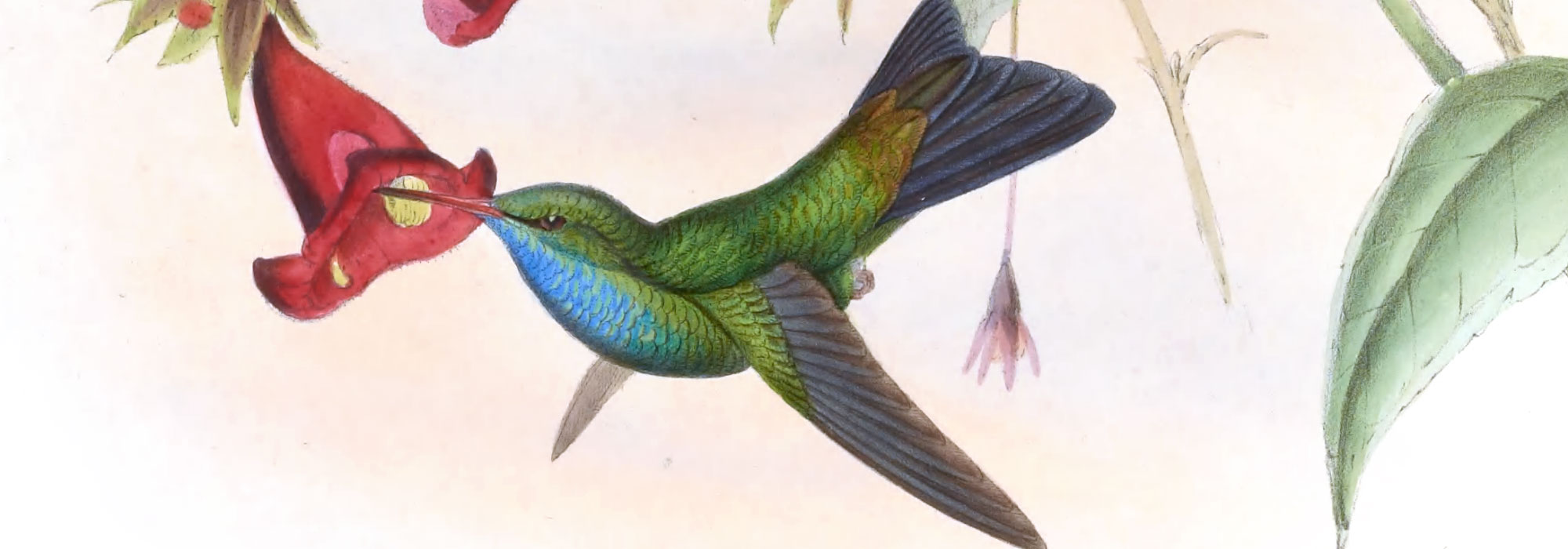
The group of Humming-Birds to which I next direct attention comprises the genera Amazilia, Pyrrhophena, Erythronota, Eupherusa, Saucerottia, Sapphironia, Hylocharis, and others, ranging between the Amaziliæ and the little green species forming the genus Chlorostilbon.
These birds are the least understood of the Trochilidæ, and are certainly the most difficult and perplexing to discriminate of the entire family. I will, however, do my best to unravel the confusion with which they are surrounded, and to place both the genera and species in as clear a light as my experience enables me. To do this effectively it will be necessary to replace some of the species in the genera from which they have been separated, and to propose a further subdivision of the remainder. In so doing it must not be understood that I am desirous of increasing the number of genera; I merely wish to indicate by a distinctive appellation the sections into which the birds appear to be naturally divided. To particularize the provinces of South America over which the members of the various genera are distributed would be useless; for their dispersion may be said to be general, as they are found from Mexico to Bolivia on the western coast, and from Brazil to Venezuela on the eastern; few of the species, however, go very far either north or south, and still fewer are found in the West India Islands.
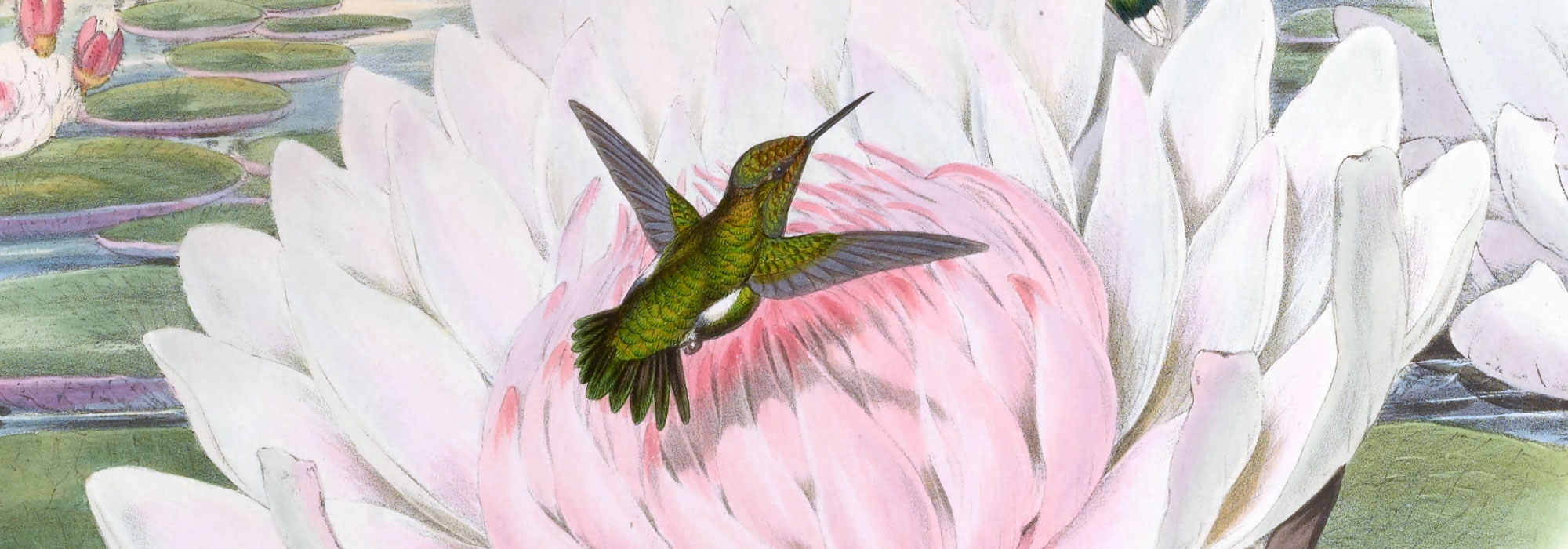
The little glittering-green Humming-Birds forming the genera Chlorolampis, Chloristilbon and Panychlora, are very widely spread over the temperate and warmer parts of the South American continent, being found along the whole course of the great Andean range, from Mexico on the north to Bolivia on the south; they also inhabit Brazil, Cayenne, the Guianas, Trinidad, and Venezuela.
The sexes differ very considerably in colour in nearly every species,—the males being clothed in a metallic covering, while that of the females is soft in texture and sombre in hue.
Note.—In the body of the work, Columbia has been given as the habitat of many of the species; but in this Introduction, Venezuela, New Granada, and Ecuador have been substituted, as the case required, for that more general term. A difference of opinion exists as to the correct spelling of New Granada,—some considering that it should be Grenada, and others Granada; the latter has been adopted in this Introduction, while in the body of the work it is usually, if not always, spelt Grenada.
The Index to the specific names of Humming-Birds comprises every term of this kind with which I am acquainted. Among them are some which are not elsewhere mentioned in this Introduction; these are the specific appellations occurring in the works of the older and a few of the more modern authors, which I have found it quite impossible to ascertain to what birds they have been applied. It is but fair to state that the Urolampra chloropogon of Cabanis and Heine, and the Chlorestes iolaimus of Reichenbach, appear from the descriptions and figures to be good species; but, as I have not seen the typical examples, I am unable to speak positively respecting them; I shall, however, keep the subject of the Humming-Birds constantly before me, and, when desirable, place my remarks upon these, and any novelties that may occur, before the scientific world.
I have stated that the Humming-Birds, like the Swifts, have ample wings and vast powers of flight, As this may appear contradictory to the remarks made on the wing-powers of Sedasphorus rufus and Trochilus Colubris, it will be as well to state, what I meant to convey is that their ample wings and bony structure is admirably adapted for sustaining them in the air for a considerable time, rather than for enabling them to take long flights from one country to another.
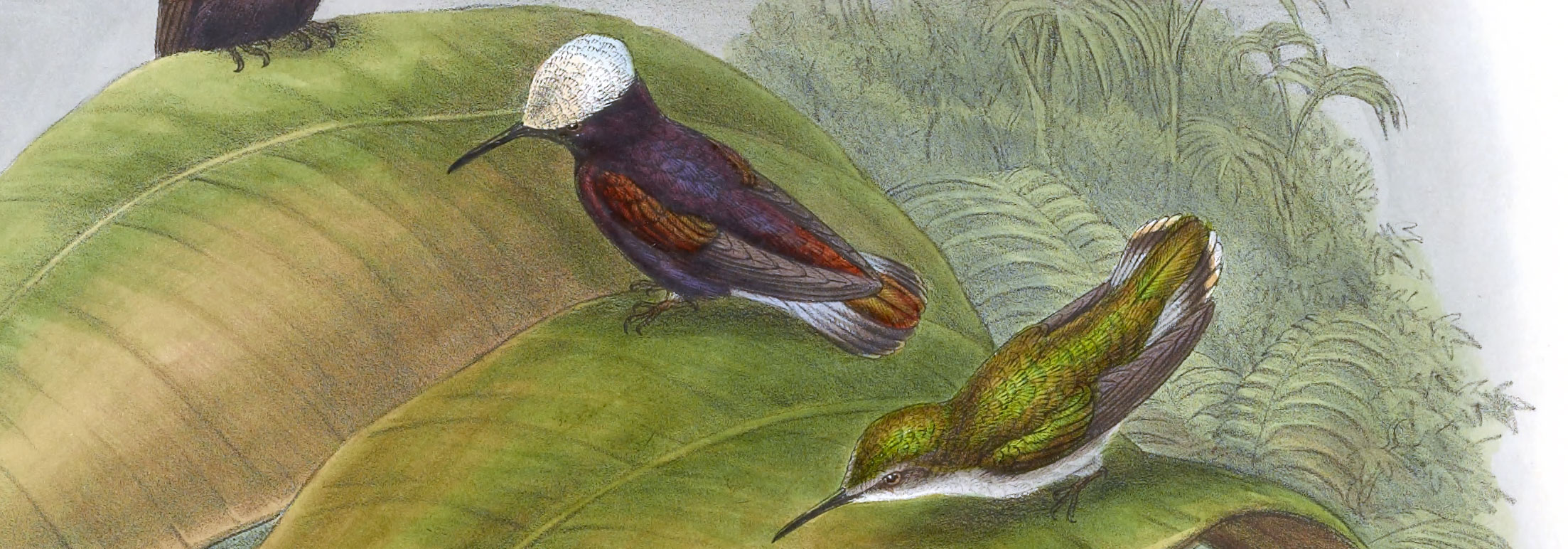
It fell to my lot, on Mr. Gould’s death, to complete the present work together with the others left unfinished at the time of his decease.
The Plates for this “Supplement” were nearly all drawn during the lifetime of Mr. Gould; to these I have added certain others as representing species well worthy of illustration, the specimens having been lent to me by Mr. Osbert Salvin. It will be noticed that a large number of species are included in the present “Supplement” without the accompanying plates. Whether it was the intention of Mr. Gould to have enumerated these in the work I know not; but as he originally meant to complete the “Supplement” in four parts, I fancy that he would only have figured the most striking of the species described since the completion of the ‘Monograph.’ I have, however, endeavoured to include in this supplementary volume descriptions of all the species of Trochilidæ discovered since 1861, when the ‘Monograph’ was finished; and this course will, I trust, commend itself to ornithologists. My thanks are due to Messrs. Sotheran for allowing me thus to render the work as complete as possible, notwithstanding the pecuniary loss involved by such a proceeding.
It is scarcely necessary for me to record here my obligations to Mr. Elliot’s admirable ‘Synopsis of the Humming-Birds,’ as the pages of this book reveal how much I have been indebted to his volume; and to Mr. Salvin I owe the deepest acknowledgment, for his advice in planning the present work and for having supervised the proofs of each Part.
R. Bowdler Sharpe
British Museum (Natural History),
South Kensington,
March 1887.
 Eutoxeres heterura
Ecuadorean Sickle-bill
Eutoxeres heterura
Ecuadorean Sickle-bill
 Eutoxeres salvini
Salvin’s Sickle-bill
Eutoxeres salvini
Salvin’s Sickle-bill
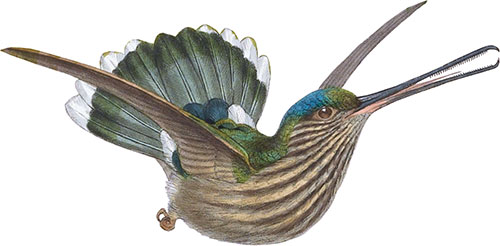 Androdon æquatorialis
Ecuadorian Tooth-bill
Androdon æquatorialis
Ecuadorian Tooth-bill
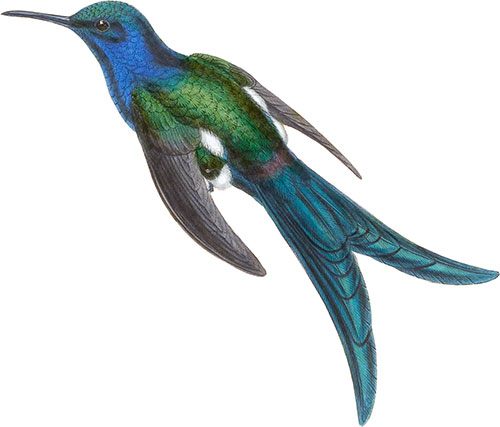 Eupetomena hirundo
Western Swallow-tail
Eupetomena hirundo
Western Swallow-tail
 Sphenoproctus curvipennis
Mexican Sabre-wing
Sphenoproctus curvipennis
Mexican Sabre-wing
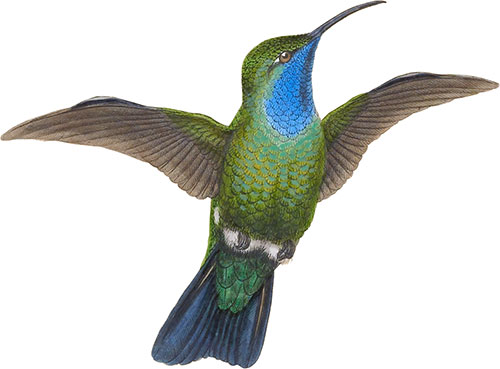 Campylopterus phainopeplus
Simons’s Sabre-wing
Campylopterus phainopeplus
Simons’s Sabre-wing
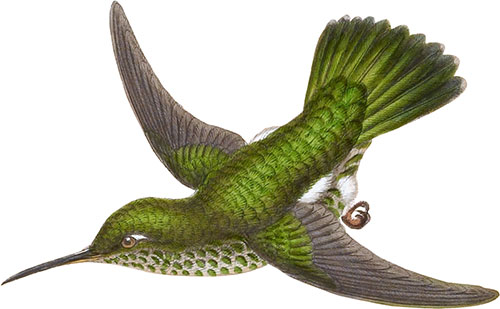 Aphantochroa hyposticta
Spotted-breasted Humming-bird
Aphantochroa hyposticta
Spotted-breasted Humming-bird
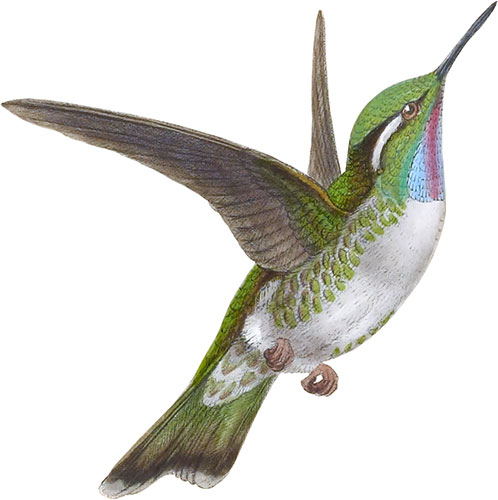 Cœligena hemileuca
White-bellied Cacique
Cœligena hemileuca
White-bellied Cacique
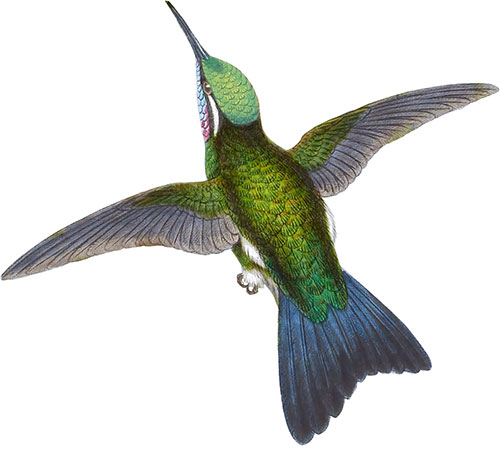 Oreopyra calolæma
Purple-throated Humming-bird
Oreopyra calolæma
Purple-throated Humming-bird
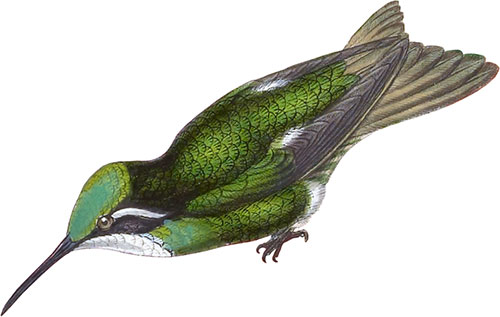 Oreopyra cinereicauda
Grey-tailed Humming-bird
Oreopyra cinereicauda
Grey-tailed Humming-bird
 Oreopyra leucaspis
White-throated Humming-bird
Oreopyra leucaspis
White-throated Humming-bird
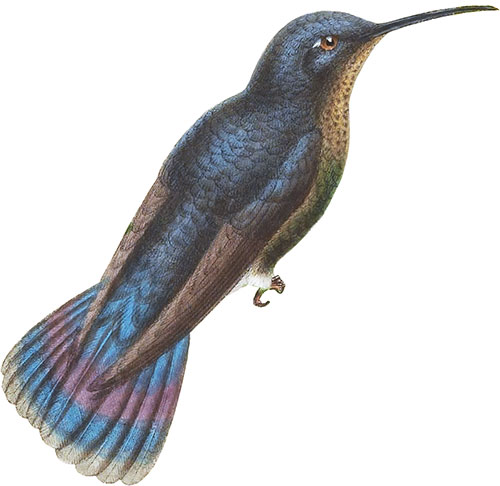 Pinarolæma buckleyi
Buckley’s Mountain Humming-bird
Pinarolæma buckleyi
Buckley’s Mountain Humming-bird
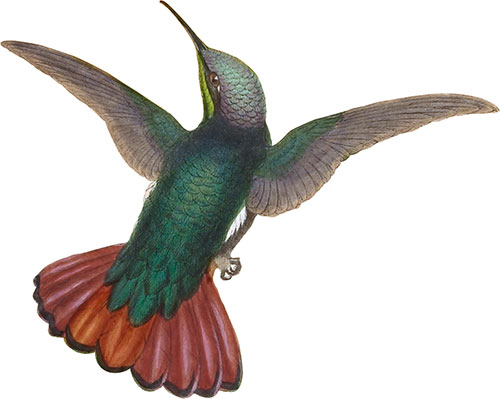 Lampornis calosoma
Elliot’s Topaz
Lampornis calosoma
Elliot’s Topaz
 Chalybura isauræ
Madame de Lafresnaye’s Plumeleteer
Chalybura isauræ
Madame de Lafresnaye’s Plumeleteer
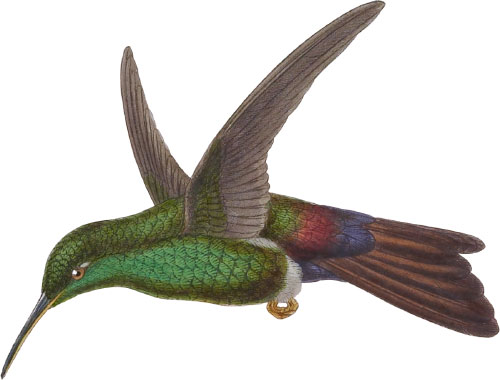 Hypuroptila melanorrhoa
Black-vented Plumeleteer
Hypuroptila melanorrhoa
Black-vented Plumeleteer
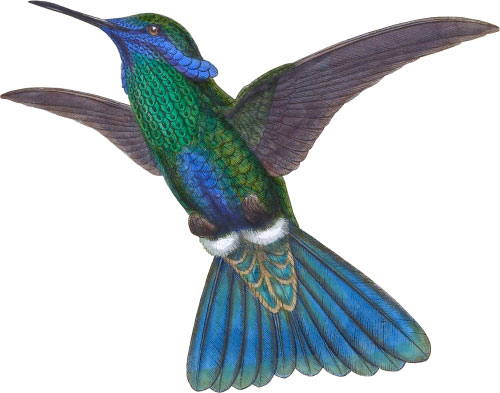 Petasophora germana
Guiana Violet-ear
Petasophora germana
Guiana Violet-ear
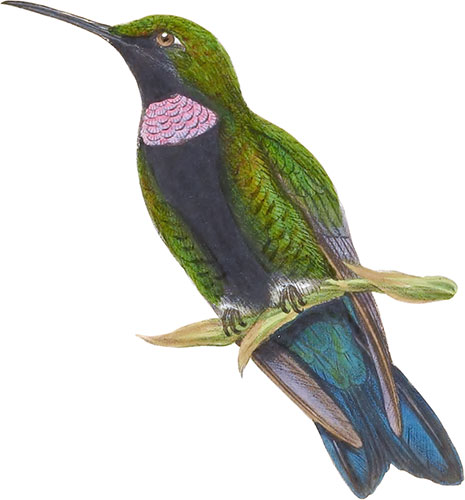 Ionolæma whitleyana
Whitely’s Humming-bird
Ionolæma whitleyana
Whitely’s Humming-bird
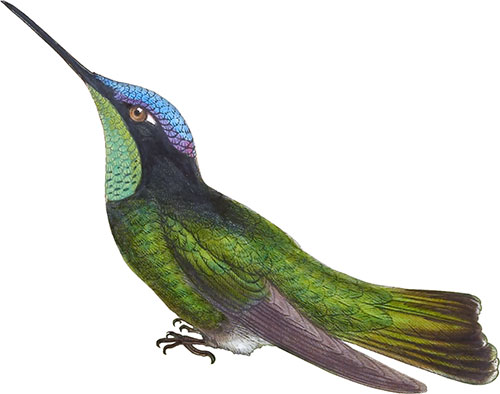 Eugenes spectabilis
Costa Rica Humming-bird
Eugenes spectabilis
Costa Rica Humming-bird
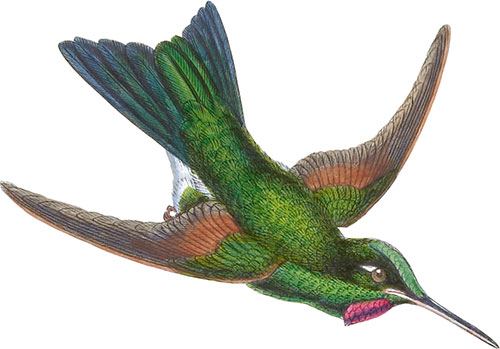 Lampraster branickii
Count Branicki’s Humming-bird
Lampraster branickii
Count Branicki’s Humming-bird
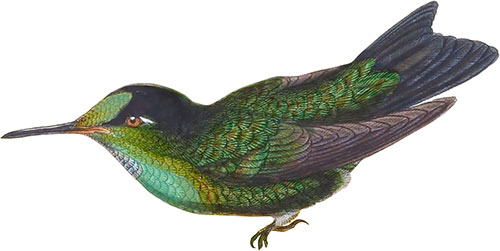 Heliodoxa xanthogonys
Guiana Brilliant
Heliodoxa xanthogonys
Guiana Brilliant
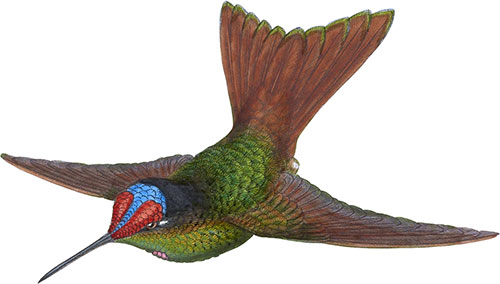 Diphlogæna hesperus
Ecuadorian Rainbow
Diphlogæna hesperus
Ecuadorian Rainbow
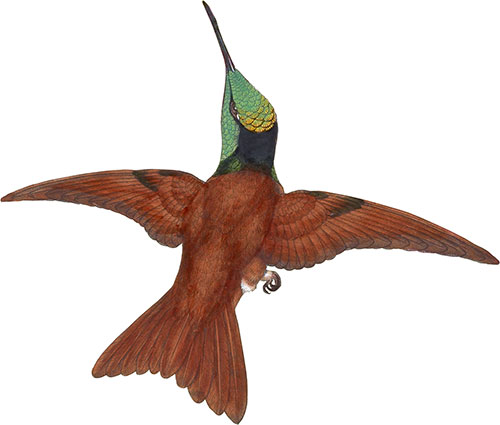 Diphlogæna aurora
Warszewicz’s Rainbow
Diphlogæna aurora
Warszewicz’s Rainbow
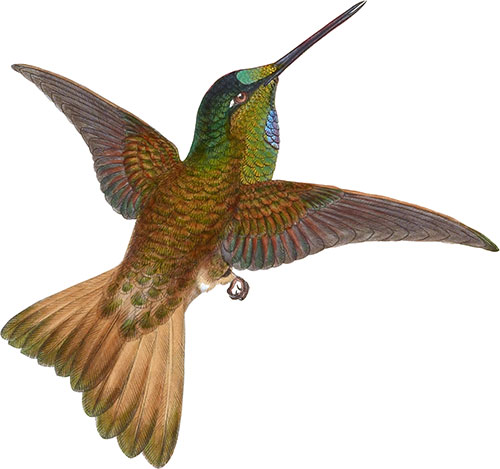 Helianthea osculans
Buff-tailed Star-frontlet
Helianthea osculans
Buff-tailed Star-frontlet
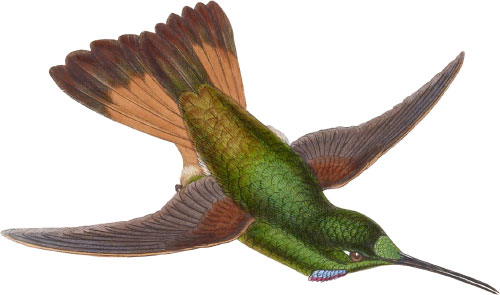 Helianthea dichroura
Jelski’s Star-frontlet
Helianthea dichroura
Jelski’s Star-frontlet
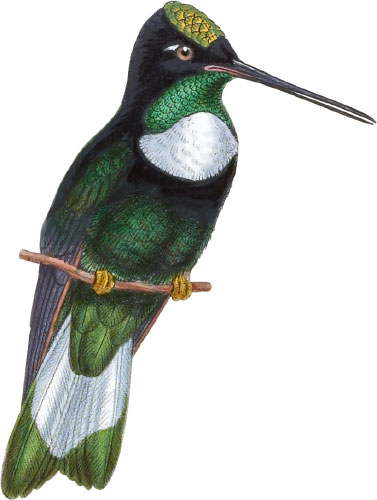 Bourcieria insectivora
Tschudi’s Inca
Bourcieria insectivora
Tschudi’s Inca
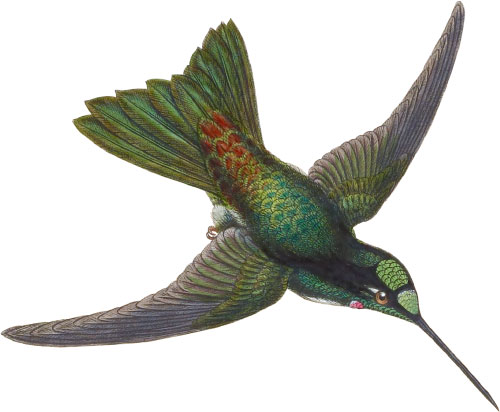 Bourcieria traviesi
Travie’s Inca
Bourcieria traviesi
Travie’s Inca
 Boucieria assimilis
Elliot’s Inca
Boucieria assimilis
Elliot’s Inca
 Bourcieria boliviana
Bolivian Inca
Bourcieria boliviana
Bolivian Inca
 Bourcieria colombiana
Colombian Inca
Bourcieria colombiana
Colombian Inca
 Dorifera rectirostris
Ecuadorean Lance-bill
Dorifera rectirostris
Ecuadorean Lance-bill
 Dorifera euphrosinæ
Mulsant’s Lance-bill
Dorifera euphrosinæ
Mulsant’s Lance-bill
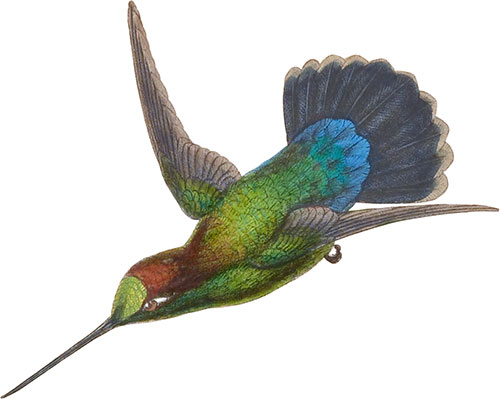 Dorifera veraguensis
Veraguan Lance-bill
Dorifera veraguensis
Veraguan Lance-bill
 Heliomaster albicrissa
White-vented Star-throat
Heliomaster albicrissa
White-vented Star-throat
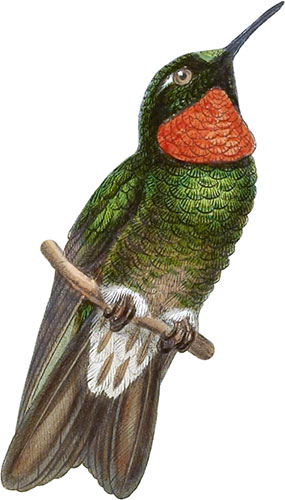 Heliangelus micrastur
Ecuadorian Star-frontlet
Heliangelus micrastur
Ecuadorian Star-frontlet
 Heliotrypha barrali
Olive-throated Humming-bird
Heliotrypha barrali
Olive-throated Humming-bird
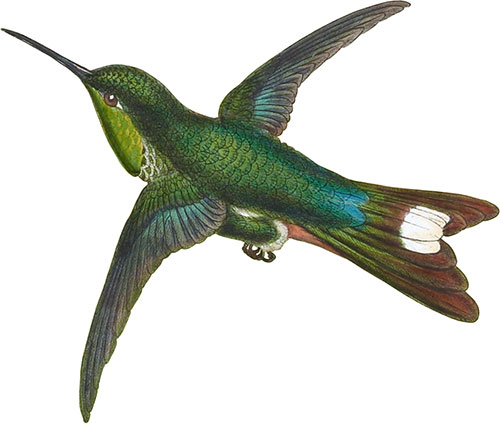 Urosticte ruficrissa
Red-vented White-tip
Urosticte ruficrissa
Red-vented White-tip
 Urosticte intermedia
Peruvian White-tip
Urosticte intermedia
Peruvian White-tip
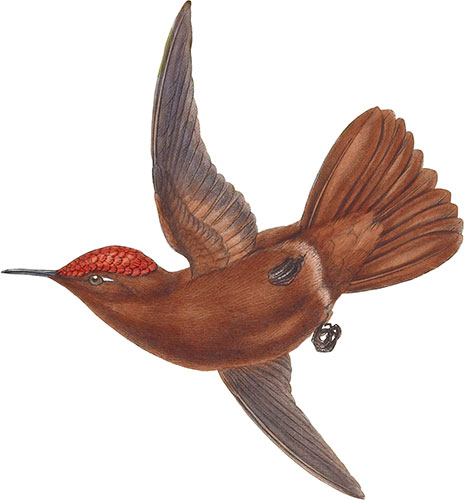 Eustephanus leyboldi
Leybold’s Firecrown
Eustephanus leyboldi
Leybold’s Firecrown
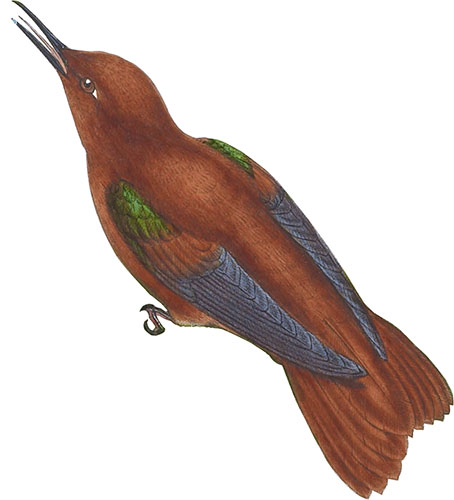 Eustephanus fernandensis
Cinnamon Firecrown
Eustephanus fernandensis
Cinnamon Firecrown
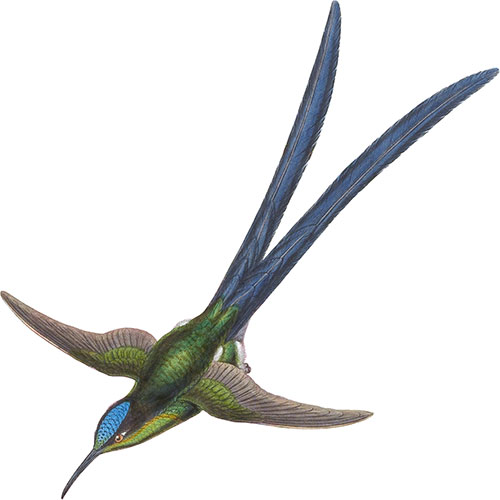 Hylonympha macrocerca
Great Fork-tailed Humming-bird
Hylonympha macrocerca
Great Fork-tailed Humming-bird
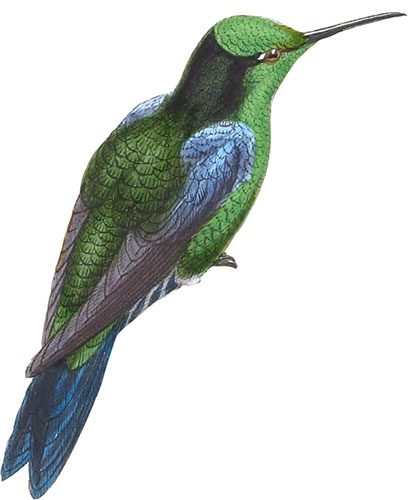 Thalurania hypochlora
Citado Wood-Nymph
Thalurania hypochlora
Citado Wood-Nymph
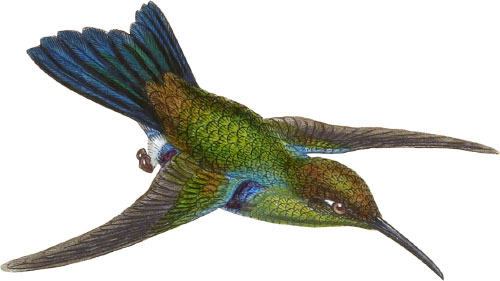 Thalurania jelskii
Jelski’s Wood-Nymph
Thalurania jelskii
Jelski’s Wood-Nymph
 Thalurania furcatoides
Para Wood-Nymph
Thalurania furcatoides
Para Wood-Nymph
 Microchera parvirostris
Purple Snowcap
Microchera parvirostris
Purple Snowcap
 Selasphorus torridus
Torrid Flame-bearer
Selasphorus torridus
Torrid Flame-bearer
 Selasphorus henshawi
Henshaw’s Flame-bearer
Selasphorus henshawi
Henshaw’s Flame-bearer
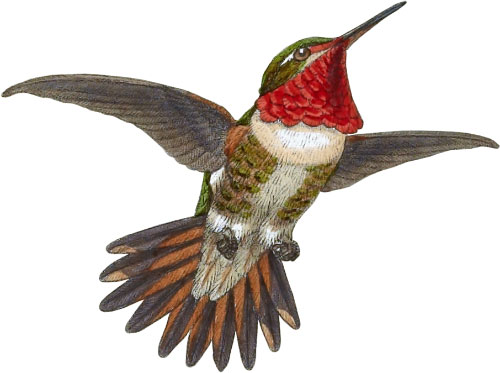 Selasphorus ardens
Salvin’s Flame-bearer
Selasphorus ardens
Salvin’s Flame-bearer
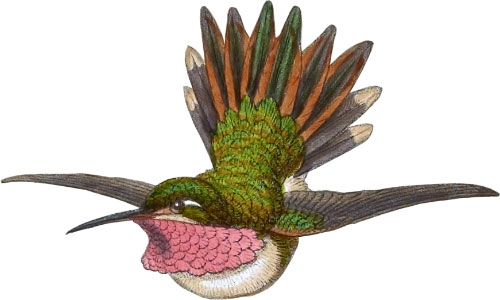 Selasphorus flammula
Rosy-throated Flame-bearer
Selasphorus flammula
Rosy-throated Flame-bearer
 Catharma othura
Lesson’s Flame-bearer
Catharma othura
Lesson’s Flame-bearer
 Atthis ellioti
Elliot’s Flame-bearer
Atthis ellioti
Elliot’s Flame-bearer
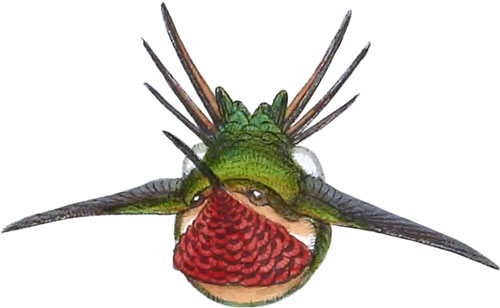 Chætocercus bombus
Little Wood-Star
Chætocercus bombus
Little Wood-Star
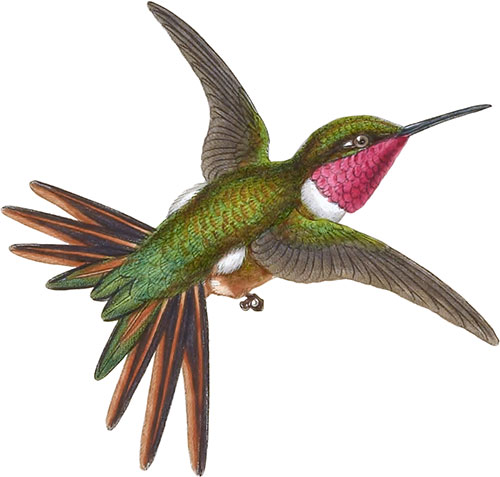 Doricha bryantæ
Bryant’s Wood-Star
Doricha bryantæ
Bryant’s Wood-Star
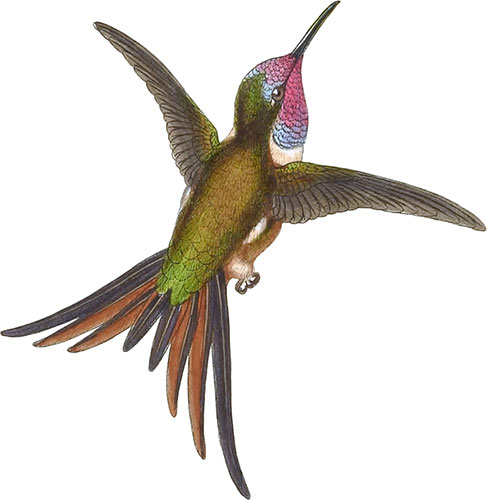 Doricha lyrura
Lyre-shaped Wood-Star
Doricha lyrura
Lyre-shaped Wood-Star
 Ptochoptera iolæma
Natterer’s Wood-Nymph
Ptochoptera iolæma
Natterer’s Wood-Nymph
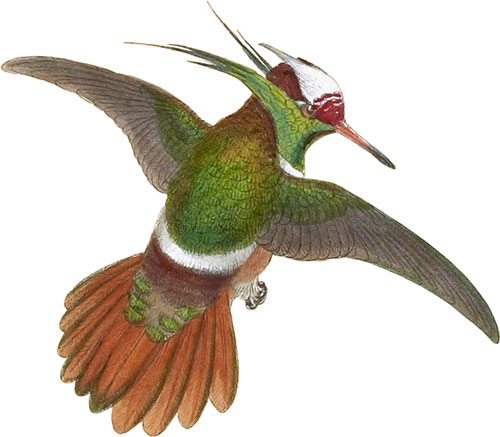 Lophornis adorabilis
Salvin’s Coquette
Lophornis adorabilis
Salvin’s Coquette
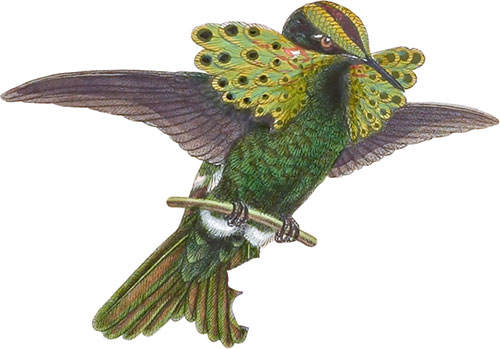 Lophornis pavoninus
Roraima Coquette
Lophornis pavoninus
Roraima Coquette
 Gouldia æquatorialis
Ecuador Thorn-tail
Gouldia æquatorialis
Ecuador Thorn-tail
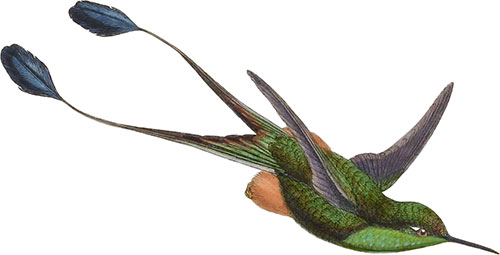 Spathura solstitialis
Ecuador Racket-tail
Spathura solstitialis
Ecuador Racket-tail
 Lesbia chlorura
Green-tailed Train-bearer
Lesbia chlorura
Green-tailed Train-bearer
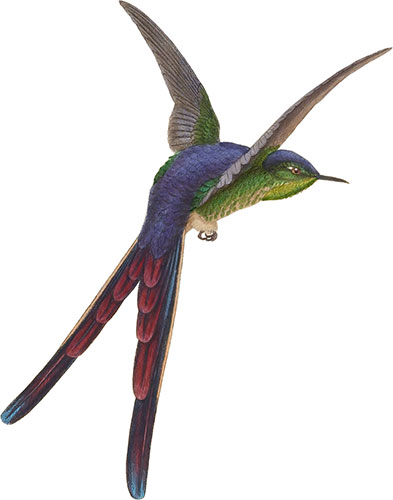 Zodalia ortoni
Quito Purpleback
Zodalia ortoni
Quito Purpleback
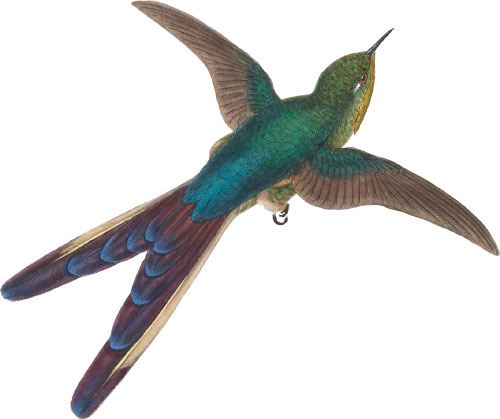 Sparganura glyceria
Purple-tailed Comet
Sparganura glyceria
Purple-tailed Comet
 Cynanthus griseiventris
Grey-bellied Train-bearer
Cynanthus griseiventris
Grey-bellied Train-bearer
 Cynanthus cœlestis
Ecuador Train-bearer
Cynanthus cœlestis
Ecuador Train-bearer
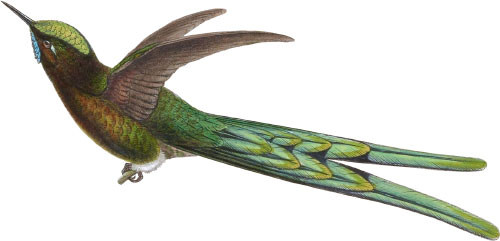 Cynanthus bolivianus
Bolivian Sylph
Cynanthus bolivianus
Bolivian Sylph
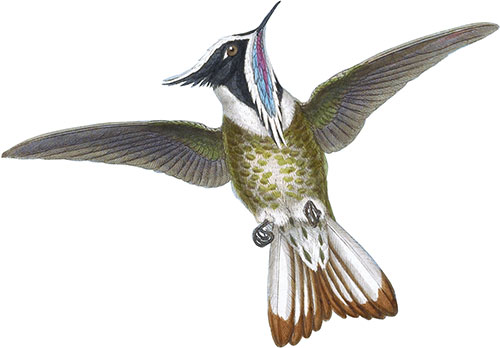 Oxypogon cyanolæmus
Blue-throated Helmet-crest
Oxypogon cyanolæmus
Blue-throated Helmet-crest
 Oxypogon stuebeli
Stübel’s Helmet-crest
Oxypogon stuebeli
Stübel’s Helmet-crest
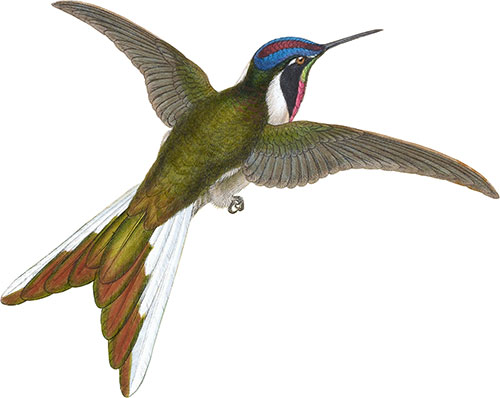 Oreonympha nobilis
Bearded Mountaineer
Oreonympha nobilis
Bearded Mountaineer
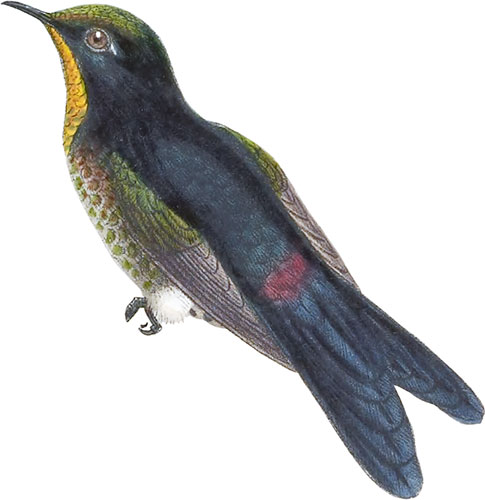 Rhamphomicron dorsale
Simons’s Thorn-bill
Rhamphomicron dorsale
Simons’s Thorn-bill
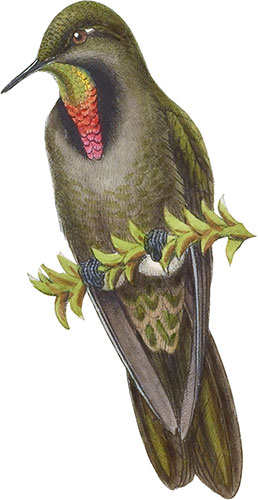 Rhamphomicron olivaceum
Olivaceous Thornbill
Rhamphomicron olivaceum
Olivaceous Thornbill
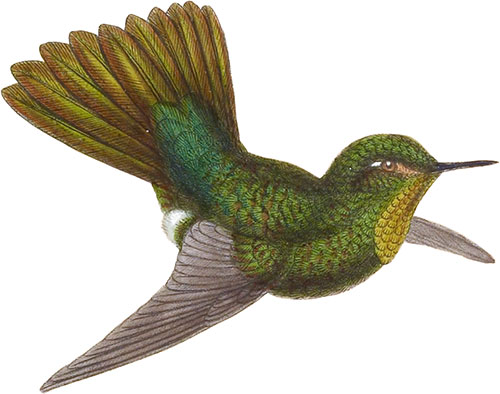 Metallura jelskii / heterocerca
Jelski’s Copper-tail
Metallura jelskii / heterocerca
Jelski’s Copper-tail
 Metallura primolina
Guiana Copper-tail
Metallura primolina
Guiana Copper-tail
 Metallura chloropogon
White-vented Copper-tail
Metallura chloropogon
White-vented Copper-tail
 Metallura eupogon
Red-throated Copper-tail
Metallura eupogon
Red-throated Copper-tail
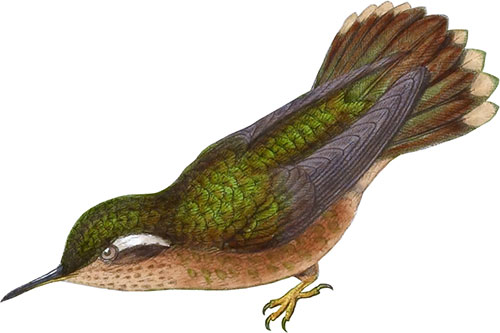 Adelomyia cervina
Buff-breasted Humming-bird
Adelomyia cervina
Buff-breasted Humming-bird
 Adelomyia chlorospila
Green-spangled Humming-bird
Adelomyia chlorospila
Green-spangled Humming-bird
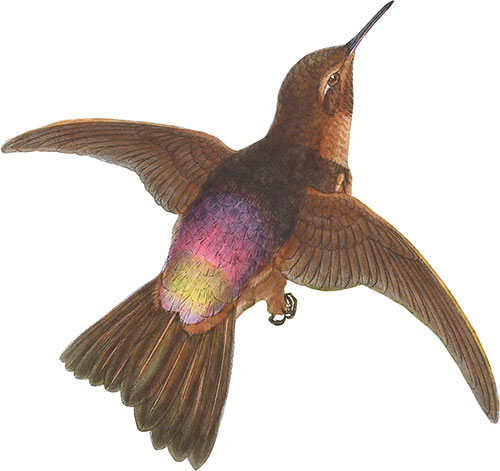 Aglæactis caumatonota
Black-throated Sunbeam
Aglæactis caumatonota
Black-throated Sunbeam
 Eriocnemis dybowskii
Dybowski’s Puff-leg
Eriocnemis dybowskii
Dybowski’s Puff-leg
 Eriocnemis dyselius
Black-vented Puff-leg
Eriocnemis dyselius
Black-vented Puff-leg
 Eriocnemis chrysorama
Blue-vented Puff-leg
Eriocnemis chrysorama
Blue-vented Puff-leg
 Eriocnemis assimilis
Brown-booted Puff-leg
Eriocnemis assimilis
Brown-booted Puff-leg
 Eriocnemis smaragdinipectus
Green-breasted Puff-leg
Eriocnemis smaragdinipectus
Green-breasted Puff-leg
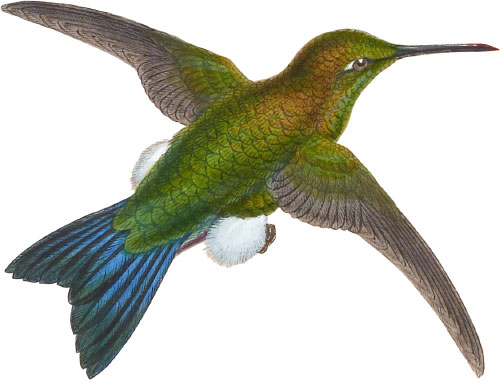 Eriocnemis sapphiropygia
Sapphire-vented Puff-leg
Eriocnemis sapphiropygia
Sapphire-vented Puff-leg
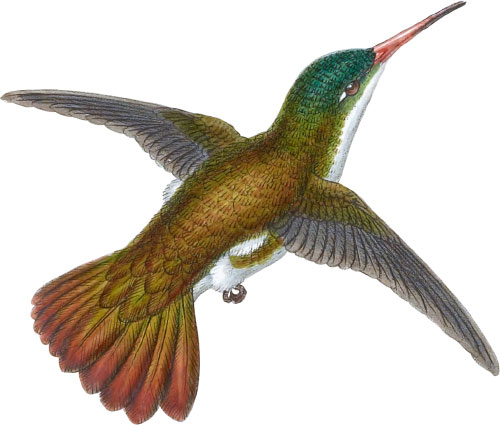 Uranomitra viridifrons
Green-fronted Azure-crown
Uranomitra viridifrons
Green-fronted Azure-crown
 Uranomitra microrhyncha
Small-billed Azure-crown
Uranomitra microrhyncha
Small-billed Azure-crown
 Leucippus chlorocercus
Spotted Whitethroat
Leucippus chlorocercus
Spotted Whitethroat
 Leucippus viridicauda
Berlepsch’s Whitethroat
Leucippus viridicauda
Berlepsch’s Whitethroat
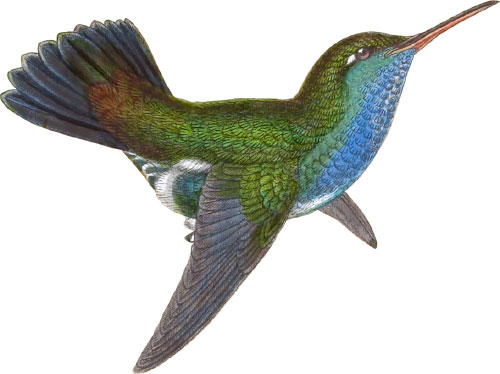 Agyrtria bartletti
Bartlett’s Emerald
Agyrtria bartletti
Bartlett’s Emerald
 Agyrtria compsa
Heine’s Emerald
Agyrtria compsa
Heine’s Emerald
 Agyrtria neglecta
Bar-tailed Emerald
Agyrtria neglecta
Bar-tailed Emerald
 Agyrtria cæruleiceps
Blue-headed Emerald
Agyrtria cæruleiceps
Blue-headed Emerald
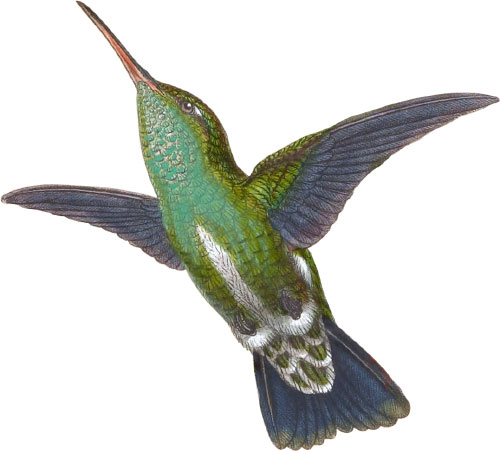 Agyrtria fluviatilis
Riverine Emerald
Agyrtria fluviatilis
Riverine Emerald
 Agyrtira apicalis
Black-tipped Emerald
Agyrtira apicalis
Black-tipped Emerald
 Agyrtria maculicauda
Guiana Emerald
Agyrtria maculicauda
Guiana Emerald
 Agyrtria luciæ
Lucy’s Emerald
Agyrtria luciæ
Lucy’s Emerald
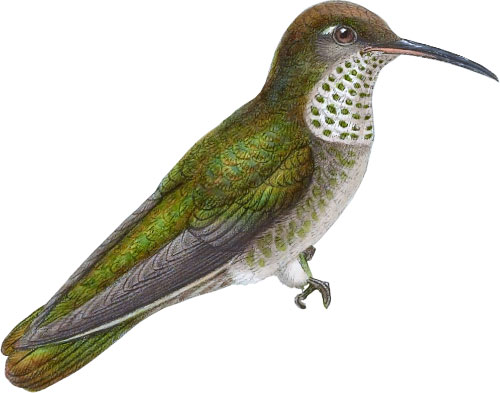 Agyrtria taczanowskii
Taczanowski’s Emerald
Agyrtria taczanowskii
Taczanowski’s Emerald
 Agyrtria nigricauda
Black-tailed Emerald
Agyrtria nigricauda
Black-tailed Emerald
 Agyrtria nitidicauda
Bright-tailed Emerald
Agyrtria nitidicauda
Bright-tailed Emerald
 Arinia boucardi
Boucard’s Emerald
Arinia boucardi
Boucard’s Emerald
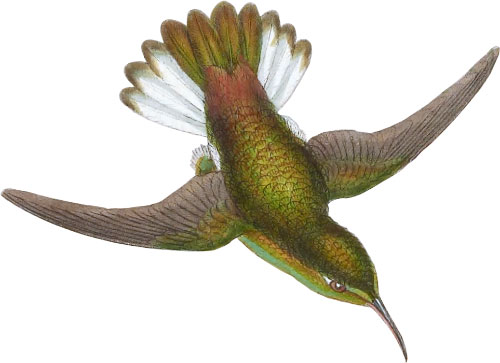 Elvira cupreiceps
Coppercrown
Elvira cupreiceps
Coppercrown
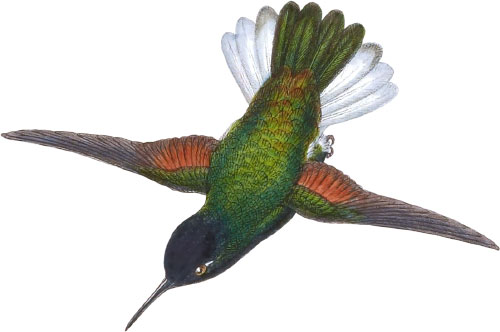 Callipharus nigriventris
Black-bellied Humming-bird
Callipharus nigriventris
Black-bellied Humming-bird
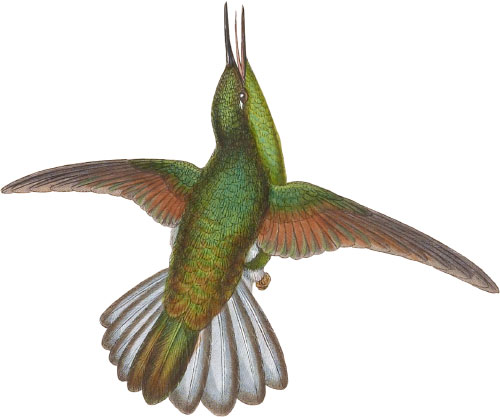 Eupherusa poliocerca
Grey Stripetail
Eupherusa poliocerca
Grey Stripetail
 Eupherusa egregia
Panama Stripe-tail
Eupherusa egregia
Panama Stripe-tail
 Polytmus leucorrhous
White-vented Golden-throat
Polytmus leucorrhous
White-vented Golden-throat
 Amazilia graysoni
Grayson’s Amazili
Amazilia graysoni
Grayson’s Amazili
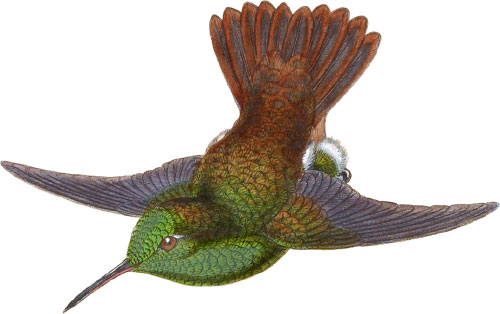 Amazilia cupreicauda
Copper-tailed Amazili
Amazilia cupreicauda
Copper-tailed Amazili
 Amazilia iodura
White-vented Amazili
Amazilia iodura
White-vented Amazili
 Amazilia lucida
Elliot’s Amazili
Amazilia lucida
Elliot’s Amazili
 Amazilia warszewiczi
Warszewicz’s Amazili
Amazilia warszewiczi
Warszewicz’s Amazili
 Amazilia elegans
Elegant Amazili
Amazilia elegans
Elegant Amazili
 Eucephala scapulata
Black-bellied Sapphire
Eucephala scapulata
Black-bellied Sapphire
 Eucephala pyropygia
Fire-rumped Sapphire
Eucephala pyropygia
Fire-rumped Sapphire
 Eucephala subcærulea
Blue-breasted Sapphire
Eucephala subcærulea
Blue-breasted Sapphire
 Eucephala cyanogenys
Blue-faced Sapphire
Eucephala cyanogenys
Blue-faced Sapphire
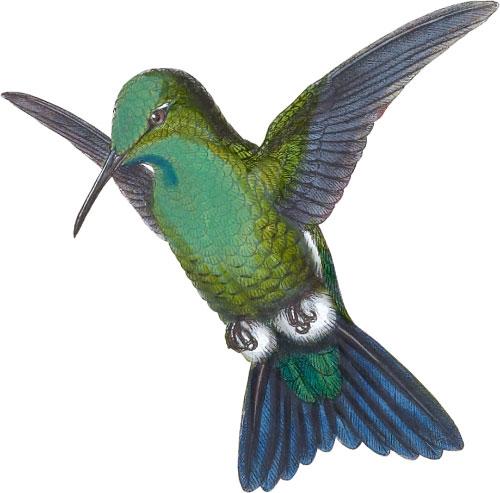 Timolia lerchi
Lerch’s Sapphire
Timolia lerchi
Lerch’s Sapphire
 Juliamyia feliciana
Felicia’s Humming-bird
Juliamyia feliciana
Felicia’s Humming-bird
 Iache magica
Mazatlan Humming-bird
Iache magica
Mazatlan Humming-bird
 Sapphironia luminosa
Lawrence’s Sapphironia
Sapphironia luminosa
Lawrence’s Sapphironia
 Chlorostilbon hæberlini
Ruddy-breasted Emerald
Chlorostilbon hæberlini
Ruddy-breasted Emerald
 Chlorostilbon stuebeli
Stübel’s Emerald
Chlorostilbon stuebeli
Stübel’s Emerald
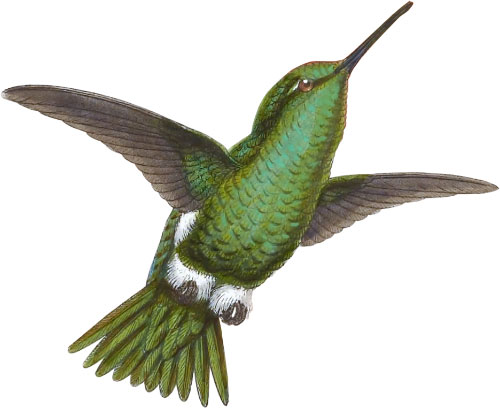 Panychlora stenura
Venezuelan Emerald
Panychlora stenura
Venezuelan Emerald
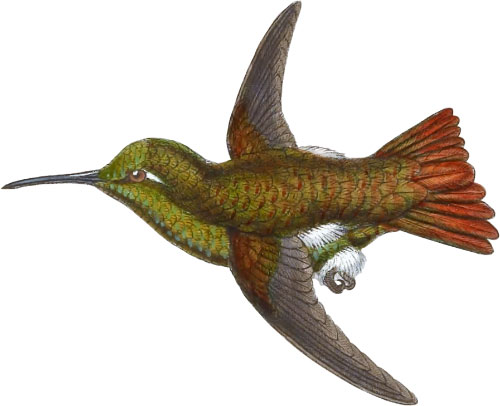 Panychlora russata
Coppery Emerald
Panychlora russata
Coppery Emerald
Featuring all 422 illustrated species from John Gould’s A Monograph of the Trochilidæ, or Family of Humming-Birds arranged by color.